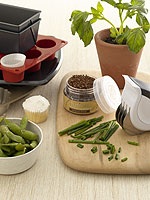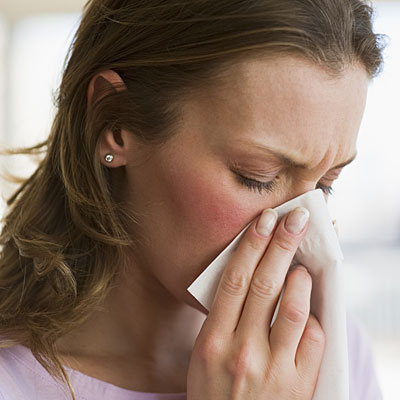Fats and sugars

These foods, although an important energy source, often contain few other nutrients, so it's healthier to limit their consumption.
This article was reviewed by Fiona Hunter
This means it's much easier to consume too many calories when eating high-fat foods. People trying to manage their weight should reduce fatty foods to help cut calories. We all need some fat in our diets, but small quantities of EFAs are the key to good health.
Saturated fat is generally solid at room temperature and is usually from animal sources. It's found in lard, butter, hard margarine, cheese, whole milk and anything that contains these ingredients, such as cakes, chocolate, biscuits, pies and pastries. It's also the white fat you can see on red meat and underneath poultry skin.
The vaue of saturated and unsaturated fat in our diets isn’t fully understood yet but generally, eating too much saturated fat is associated with increased blood cholesterol concentrations and an increased risk of heart disease. Eating less helps to minimise the risks it poses to heart health. Polyunsaturated fats contain inflammatory omega-6 fatty acids and it’s the balance of these with omega-3s which is important.
Trans fats, or hydrogenated unsaturated fats, are used in the food industry but are increasingly recognised as being unhealthy.
Unsaturated fat is usually liquid at room temperature and generally comes from vegetable sources. Monounsaturated and polyunsaturated fats are both included in this group. Unsaturated vegetable oils are generally a healthier alternative to saturated fat and can be found in sesame, sunflower, soya, olive and rapeseed oil, soft margarine and in foods such as oily fish, including mackerel, sardines, pilchards and salmon. Where possible, you should ensure the fat you eat is unsaturated.
Did you know...?
For the average woman, this means about 70g of total fat a day; for men, roughly 95g.
The latest National Diet and Nutrition Survey showed that, on average, UK adults consume about the right amount of fat, but that the intake of saturated fats is currently too high for good health (at present they provide about 13 per cent of total energy).
To reduce the amount of fat in your diet, try the following:
These added sugars can be found in a variety of foods including confectionery, soft drinks, desserts and breakfast cereals. Added sugars are a great source of energy, but provide no other nutrients.
Sugary foods and drinks pose a threat to dental health, especially if consumed between meals.
Even the sugars in honey and fruit juices can cause tooth decay if good oral hygiene isn't followed and you consume a lot of these foods.
Only have sugary foods at mealtimes, when other dietary and oral factors can help to minimise the risk they pose to your teeth.
Sugary drinks have been identified as a possible cause of obesity. These drinks do not trigger the same sense of fullness as food with similar calories, increasing the risk of overeating.
This article was reviewed by Fiona Hunter
What are fats and sugars?
This group, which includes foods such as cakes, biscuits, sweets, sugar-sweetened drinks and crisps, makes up the smallest section of the 'eatwell plate'.Fat facts
- Fat transports the fat-soluble vitamins A, D, E and K around the body
- It can often improve the flavour and perception of foods, increasing their palatability
- It supplies essential nutrients such as fat-soluble vitamins and essential fatty acids (EFAs)
- EFAs must be supplied from the diet, and are thought to have a positive effect on heart health and the immune system
- It has a key role in membrane structure
- It cushions, and so protects, the internal organs
- It's stored in adipose tissue (a thick layer of tissue under the skin) as a long-term fuel reserve. Excess fat may also accumulate around your organs, especially in the abdominal cavity
This means it's much easier to consume too many calories when eating high-fat foods. People trying to manage their weight should reduce fatty foods to help cut calories. We all need some fat in our diets, but small quantities of EFAs are the key to good health.
The two types of fat
Fat can be divided into two main groups - saturated and unsaturated.Saturated fat is generally solid at room temperature and is usually from animal sources. It's found in lard, butter, hard margarine, cheese, whole milk and anything that contains these ingredients, such as cakes, chocolate, biscuits, pies and pastries. It's also the white fat you can see on red meat and underneath poultry skin.
The vaue of saturated and unsaturated fat in our diets isn’t fully understood yet but generally, eating too much saturated fat is associated with increased blood cholesterol concentrations and an increased risk of heart disease. Eating less helps to minimise the risks it poses to heart health. Polyunsaturated fats contain inflammatory omega-6 fatty acids and it’s the balance of these with omega-3s which is important.
Trans fats, or hydrogenated unsaturated fats, are used in the food industry but are increasingly recognised as being unhealthy.
Unsaturated fat is usually liquid at room temperature and generally comes from vegetable sources. Monounsaturated and polyunsaturated fats are both included in this group. Unsaturated vegetable oils are generally a healthier alternative to saturated fat and can be found in sesame, sunflower, soya, olive and rapeseed oil, soft margarine and in foods such as oily fish, including mackerel, sardines, pilchards and salmon. Where possible, you should ensure the fat you eat is unsaturated.
Did you know...?
- A jam doughnut contains 10.9g fat
- A slice of malt loaf contains 0.7g fat
- A teaspoon of peanut butter contains 5.4g fat
- A pint of whole milk contains 22.8 g fat
- A handful of mixed nuts contains 21.6g fat.
How much is enough?
Government guidelines recommend fats make up no more than 35 per cent of the energy in your diet, and that saturated fats should provide less than 11 per cent of total energy intake.For the average woman, this means about 70g of total fat a day; for men, roughly 95g.
The latest National Diet and Nutrition Survey showed that, on average, UK adults consume about the right amount of fat, but that the intake of saturated fats is currently too high for good health (at present they provide about 13 per cent of total energy).
To reduce the amount of fat in your diet, try the following:
- Look for alternatives to cakes, biscuits and savoury snacks, which are often high in fat - try fresh fruit, dried fruit and cereal-based products
- Trim any visible fat off meat and poultry
- Buy lean cuts of meat and reduced-fat minces
- Poach, steam, grill or bake food rather than fry it
- Swap whole milk for semi-skimmed or skimmed
- Opt for low-fat dairy products
- If you use lard, butter or hard margarine, switch to vegetable oil and low-fat spreads
Sugary foods
There are two types of sugar - those found naturally in fruit and milk (which are fine and don't need to be cut down) and those that are added to the diet.These added sugars can be found in a variety of foods including confectionery, soft drinks, desserts and breakfast cereals. Added sugars are a great source of energy, but provide no other nutrients.
Sugary foods and drinks pose a threat to dental health, especially if consumed between meals.
Even the sugars in honey and fruit juices can cause tooth decay if good oral hygiene isn't followed and you consume a lot of these foods.
Only have sugary foods at mealtimes, when other dietary and oral factors can help to minimise the risk they pose to your teeth.
Sugary drinks have been identified as a possible cause of obesity. These drinks do not trigger the same sense of fullness as food with similar calories, increasing the risk of overeating.
How to reduce consumption of sugary foods
- Swap sugary drinks for water, low-fat milk or artificially sweetened drinks to reduce your calorie intake
- Try swapping sugary snacks for fruit or bread-based options such as fresh whole fruit or teacakes/malt loaf
- Try to halve the amount of sugar you put in hot drinks, or cut it out completely
- Buy reduced-sugar varieties of jam and marmalade
- Choose canned fruit in natural juice rather than syrup



























